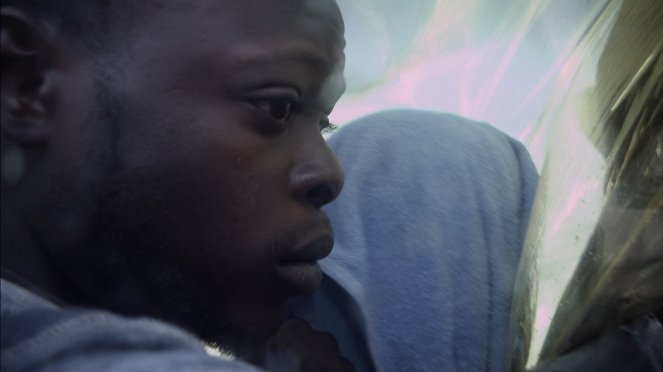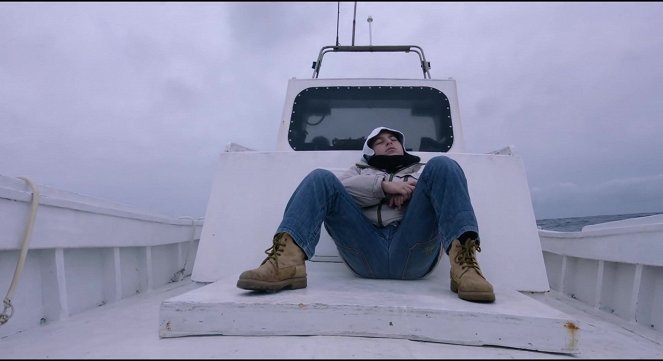Ohjaus:
Gianfranco RosiKäsikirjoitus:
Gianfranco RosiKuvaus:
Gianfranco RosiNäyttelijät:
Samuele PucilloSuoratoistopalvelut (1)
Juonikuvaukset(1)
Elokuvan keskushenkilö on kalastajaperheen poika Samuele, joka asuu saarella, meren keskellä. Hän käy koulua, ampuu ritsalla, leikkii kuten kuka tahansa 12-vuotias. Samuele pysyttelee mieluiten maan kamaralla, vaikka kaikki hänen ympärillään on merta – ja ihmisiä, jotka yrittävät ylittää sen päästäkseen hänen saarelleen. Saari on Lampedusa, Euroopan symbolisin raja, jonka läpi tuhannet pakolaiset ovat pyrkineet 20 vuoden ajan etsiessään vapautta. Gianfranco Rosi vietti saarella vuoden kameransa kanssa ja teki mitä puhuttelevimman elokuvan tämän hetken Euroopan polttavimmasta teemasta – pakolaiskysymyksestä. (Cinemanse)
(lisää)Videot (7)
Arvostelut (5)
51st KVIFF - I have several problems with this film, and the first one is that I’m not sure whether it isn’t exploiting a terrible tragedy for an artistic pose, mainly as a result of the recreations, where people (even refugees in some cases) behave in front of the camera as if the camera wasn’t there. But on the other hand, it has an interesting atmosphere and emotional consequences in the end.
()
There are strange places in the world where people essentially experience destinies every moment, which we neither approach nor want to approach. The film tells the story of an Italian island where refugees from Africa have been heading for a long time. It's not a pretty sight, but they keep trying. And the locals live their own lives here. It's a strange contrast.
()
It is very difficult to evaluate, and at least a slightly non-participatory attitude toward it should be sought out. Rosi filmed his documentary much more thoughtfully and composed than any feature film, with explicit scenes from the "ships of death" interspersed with an almost comedic routine of the life of a little boy from Lampedusa. It is this alternation of emotional heat and frost that gives the film a rhythm and power, from which it is very difficult to escape the cynicism of the refugee "mass". Rosi speaks directly. Part of the scenes from the refugee camp deliberately follow the refugees in the twilight, while the part at sea takes place in raw detail. The explicitness of some shots will provoke a debate about what is permissible and what is over the edge. But for social pornography, Rosi's approach is far too sophisticated and consistent on both story levels. The two worlds – in one people suffer and die, and in the other people live a completely ordinary life - are separated by several kilometers and are connected by the character of a doctor who takes care of refugees. His testimony (by the way, one of the few that appears in the film, otherwise most of the talk is provided by civilian dialogues) is the strongest moment of the whole so-called refugee crisis for me. Rosi tries to persuade the viewer not to resort to several adopted escape strategies. This is simply happening and we have to deal with it somehow. Fire at Sea is not custom work or a social order. It is a well-thought-out artistic image of poetic ordinariness and a catastrophe that is happening on our doorstep. There will be heated debates about the moral and political dimension. Fire at Sea will polarize. Like any big and serious movie. [Berlinale 2016]
()
Fire at Sea takes essentially the same approach as that used in Sacro GRA. The camera patiently observes several performers in long, mostly still shots that are generally not causally related, and returns to them from time to time. There is no accompanying commentary, no music, no speeding up or slowing down of the numbingly slow pace. The director only exceptionally interacts with the people in front of the camera. Thanks to the fact that the shots last longer than necessary, we have enough time not only to think, but also to appreciate how Rosi composes shots. People are as equally important to him as the setting that surrounds and shapes them. Everyday moments in the lives of the local fishermen, boys spending time bombarding cactuses with faces carved into them and an old woman who in most shots is preparing a meal or making her bed contrast with stories that involve the introduction of the actors and are often about life. In accordance with the title of the film, in which two incompatible elements are also combined, the world of a crisis with a global impact and the world of ordinary people going about their daily activities are like fire and water. Without directly addressing more insistent (and thus less convincing) films, the contrast of the great tragedy and the parallel stories of everyday life on which the film is based leads us to consider our own position as those who live in relative affluence and security, and whose horizon is often also limited by our immediate surroundings. If only to get a full appreciation of the comfort in which we live, it is worth seeing this well-considered contribution to a topic that otherwise generates hasty conclusions. Only time will tell if Fire at Sea will hold up beyond the period that initiated its creation and rank among the classic works of Italian neorealism. 65%
()
Compared to Rosi's previous horrible bore, Sacro GRA, this one has the advantage of topicality, and especially the passages with the rescue and subsequent trial of the stranded refugees provide a raw, uncomfortable look at a humanitarian disaster that the vast majority of us have only experienced from a few second-hand or multi-hand sources, operating on a telephone-game basis. The contrast of the picturesque lives of European natives with the refugees' struggle for basic existence is a pretty powerful concept, despite the somewhat irritating form (the slow, civil, and somewhat unbelievable framing of the islanders' daily activities lends too much credence to the fact that we're watching a cinematically uncolonized reality). The problem for me, though, is mostly with the terrible metaphors (my pet peeve, sorry). The boy sees well with the eye he aims the slingshot with while shooting cacti carved into the shape of human heads, but because of constantly covering the other eye, this becomes lazy and has to be forcibly restored to its original function. I mean, come on!
()
Kuvagalleria (23)
Kuva © Artcam



Mainos